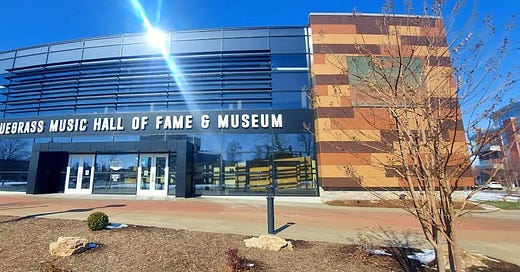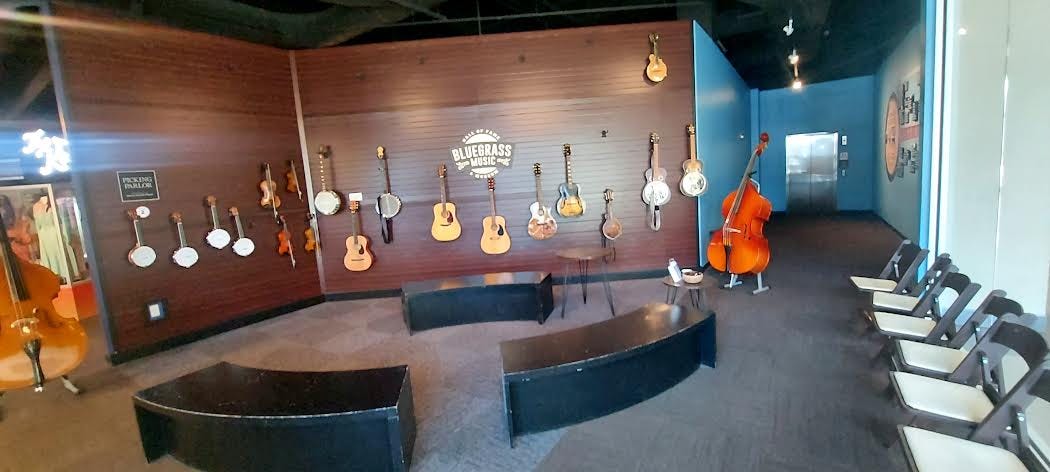What does the term “Bluegrass music” mean to you?
Is it a traditional banjo-guitar-fiddle tune performed by old men? A popular Americana music that has become trendy thanks to the Avett Brothers and Mumford & Sons incorporating folk and bluegrass into their roots songs?
Or, perhaps, bluegrass is a form of music going back to 1940 that continues to evolve to this day.
For those who seek an eye-opening experience with bluegrass, take a trip with me to the Bluegrass Music Hall of Fame and Museum in Owensboro, Kentucky.
The Bluegrass Music Hall of Fame and Museum is a treat for music lovers. (Photo by John Naughton.)
In the 1940s, native Kentuckian Bill Monroe — frequently called the Father of Bluegrass — emerged as a major force in American music, both on the stage and on vinyl.
The instrumentation of the genre typically features banjo, guitar, mandolin and bass. (There are often additional instruments, depending on the band and the setting.)
While closely affiliated with country music, bluegrass tends to have a particular sound. There are the high-pitched vocals, harmonies and an occasional lightning-fast pace. Consider “Foggy Mountain Breakdown” performed by Lester Flatt and Earl Scruggs.
Perhaps the biggest delight is a room where visitors can pluck away at a banjo, guitar or other instrument. (Photo by John Naughton.)
Over the years, bluegrass would both relish and repulse with its association with twangy TV shows like “The Beverly Hillbillies” and “Hee Haw.”
But movies like “O Brother, Where Art Thou?” and the Americana scene made bluegrass and types of music influenced by it trendy. Both traditional music fans and hipsters became interested.
Keep reading with a 7-day free trial
Subscribe to My Life, in Color to keep reading this post and get 7 days of free access to the full post archives.





